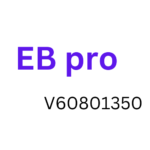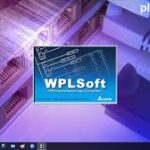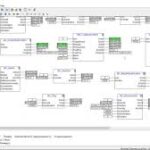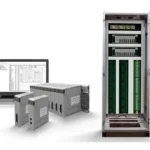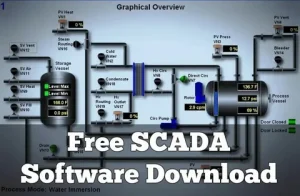Introduction to PLC, HMI and SCADA
In modern industrial automation, the integration of programmable logic controllers (PLCs), human-machine interfaces (HMIs) and supervisory control and data acquisition (SCADA) systems is paramount for the effective control and monitoring of industrial processes. Each component plays a key role in ensuring smooth operation, data collection and visualization in industrial environments. Let’s dive into each of these components and explore their functions and interdependencies.
1. Programmable Logic Controllers (PLC)
PLCs serve as the backbone of industrial automation and provide real-time control of various processes and machines. Originally designed as a replacement for traditional relay-based control systems, PLCs have evolved into sophisticated devices capable of executing complex control algorithms.
PLC key features and functions:
• Input/output Handling:
PLC interface with sensors, actuators and other industrial devices for process monitoring and control.
• Programmability:
PLCs are programmed using ladder logic, functional block diagrams, or structured text to implement control logic.
• Real-time operation:
PLCs operate in real-time and ensure timely execution of control tasks.
• Reliability:
Built for harsh industrial environments, PLCs offer high reliability and durability.
• Modularity:
PLC systems are modular, allowing for easy expansion and customization to meet specific application requirements.
2. Human Machine Interface (HMI)
HMIs serve as the interface between operators and the control system, providing a visual representation of the industrial process and allowing operators to monitor and interact with the system in real time. HMIs range from simple touch panels to advanced graphical interfaces with extensive functionality.
Key features and functions of HMI:
• Data visualization:
HMIs display real-time process data, alarms and trends in an easy-to-understand format.
• Operator interaction:
Operators can interact with the system through touch screens, buttons and other input devices to control processes and acknowledge alarms.
• Alarm management:
HMIs provide alarm notification and facilitate the acknowledgment and management of alarms by operators.
• Trend analysis:
HMIs offer tools to analyze historical data trends, facilitate process optimization and troubleshooting.
• Integration:
HMIs integrate with PLCs and other control devices to provide a unified interface for process control.
3. Supervisory control and data acquisition (SCADA)
SCADA systems are centralized software platforms that enable monitoring, control and data acquisition from remote industrial sites or processes. SCADA systems collect data from PLCs, HMIs and other devices and provide operators with a comprehensive view of the entire industrial operation.
Key features and functions of SCADA systems:
• Data collection:
SCADA systems collect real-time data from PLCs, sensors and other devices across distributed sites.
• Visualization:
SCADA systems visualize process data using graphical interfaces, allowing operators to effectively monitor operations.
• Control:
Operators can remotely control processes and equipment through SCADA systems, enabling rapid response to changing conditions.
• Historical data storage:
SCADA systems store historical data for analysis, reporting and compliance.
• Alarm Notification:
SCADA systems generate alarms for abnormal conditions and provide alerts to operators to take quick action.
Integration of PLC, HMI and SCADA systems
The integration of PLC, HMI and SCADA systems creates a powerful industrial automation solution that increases operational efficiency, reliability and safety. PLCs provide real-time control at the device level, while HMIs offer an intuitive interface for local operator interaction. SCADA systems extend this functionality by providing centralized monitoring, control and data management capabilities across multiple locations or processes.
Advantages of integration:
• Seamless data exchange:
PLCs communicate with HMI and SCADA systems, enabling seamless data exchange for monitoring and control.
• Centralized Management:
SCADA systems centralize data management and allow operators to monitor and control multiple processes from a single location.
• Improved decision-making:
Access to real-time and historical data facilitates informed decision-making for process optimization and troubleshooting.
• Improved safety:
Integration enables rapid response to abnormal conditions, improves safety and minimizes downtime.
Conclusion
PLC, HMI and SCADA systems form the basis of modern industrial automation and provide control, visualization and data management capabilities that are essential for efficient operations. By integrating these components, industrial organizations can achieve higher productivity, reliability and safety in their operations and thus ensure competitiveness in today’s dynamic market environment.

